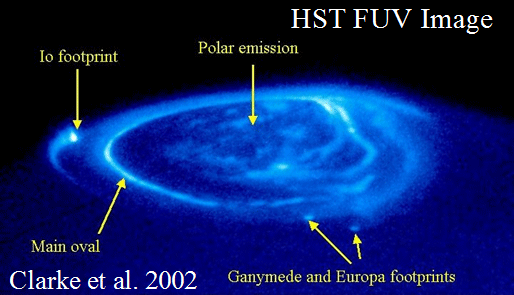

UVS Exists to Characterize Jupiter's Auroras
"The Juno Project shall characterize the UV auroral emissions over all science orbits"
Characterization includes imaging and spectroscopy of the UV auroral emissions. Imaging the auroral morphology allows mapping of the emission distribution to Jovian coordinates and provides context for Juno's locally-measured particles and fields measurements in the larger polar magnetosphere. Spectroscopy allows determination of the mean energy of the precipitating electrons at the top of Jupiter's atmosphere. Magnetic field models provide the connection between Juno and its field line footprint in the Jovian aurora.
Besides characterizing the auroral emissions, our UVS goals are to:
- Map the precipitating electrons energies (using differential absorption by CH4)
- Observe the spacecraft footprint region to compare UVS data with particle and waves data
- Look for structure and variability in low-latitude airglow emissions
UVS View at Start of Perijove Passes
- This animation shows Juno’s view of Jupiter’s aurora at the start of the 6-hour perijove pass of each orbit (the Sun is to the right)
- The main aurora and the footprint of Io's orbit are shown (along with the expected location of the Io Flux Tube footprint)
- The dogbone-shaped UVS slit is shown centered on Jupiter, but during each S/C spin it scans from south to north at the orientation shown
- Many UV-bright stars are in the vicinity of Jupiter and by centroiding their signal we will be able to accurately map auroral emissions on Jupiter

































